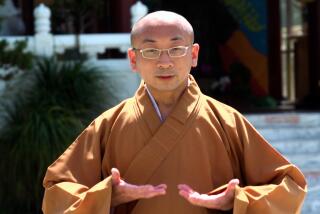Thoughts on meditation
- Share via
Re “Take a breath,” Opinion, July 25
Specific court precedent prohibits teaching transcendental meditation in publicly funded schools. Humanists, Christians and others came together in the 1979 New Jersey case that led to this ban. They can be expected to unite again should current teaching repeat old mistakes.
If a meditation technique is rooted in transcendental meditation, Hinduism, Buddhism or any other specific religious practice, then it is clearly religious in nature. To pass constitutional muster, a meditation session would need to be completely sanitized of ritualistic sectarian religious undertones. Otherwise it would show a preference for one religious belief over another as well as for belief over nonbelief.
It has been shown that these same benefits can be attained through a regular midday nap, the use of long-established secular relaxation techniques and by other means that are clearly free of religious undertones. There is no need to import stealth religion into the public classroom to get children to chill out.
Michael Friedman
Washington
More than 100 parents took a “breath” last week at Santa Clara University at the end of two days of freshmen orientation filled with PowerPoint presentations, panel discussions and pre-separation-anxiety jitters. Parents of all denominations were invited to close their eyes and meditate as a Jesuit faculty member led us through a series of thoughts about our daughters’ or sons’ milestones. Simple yet focused thoughts ran through my mind, and I could sense the change in my breathing. A sense of well-being was palpable after we were instructed to open our eyes. “Mindfulness” did make me feel better. Why argue about where we are taught to find that inner peace? It is a lesson that everyone should have a chance to learn.
Tina Arrañaga Kubasek
Whittier
More to Read
Sign up for Essential California
The most important California stories and recommendations in your inbox every morning.
You may occasionally receive promotional content from the Los Angeles Times.










